According to You: The worst engines you’ve experienced
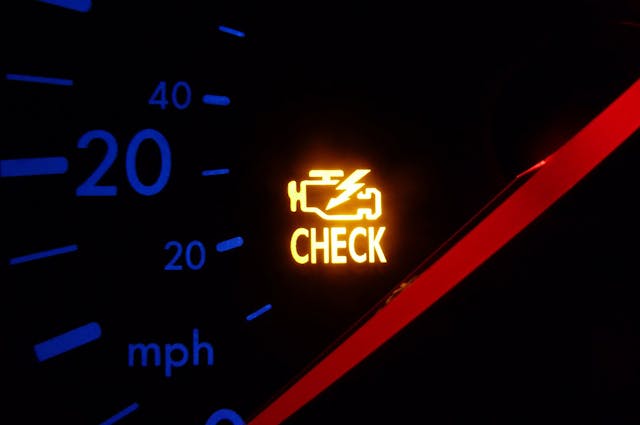
We recently asked about the worst engines you’ve experienced in your lifetime, and you certainly delivered. Perhaps too well, as the responses were overwhelming. How on earth could we cover all the bad engines made over the years? Our solution to this (wonderful) problem was thus: we thinned the herd down to responses that specifically included personal experiences that add a little more value than just the usual re-hashing of the same stories you’ve heard elsewhere.
Let’s get right to it!
The Iron Duke four-cylinder
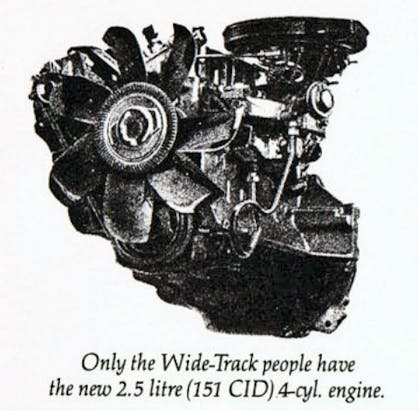
Charles A Parent said that the worst engine he ever owned was a Pontiac Iron Duke that “constantly ate Throttle Position Sensors and cracked the cast iron exhaust manifold three times.”
While the inclusion of TPS sensors suggests it might be the later TECH IV design, combining that with a four-speed shifter “that was prone to locking, in or out of gear” caused him to Lemon Law the car.
VW Type 412 1.8-liter flat-four
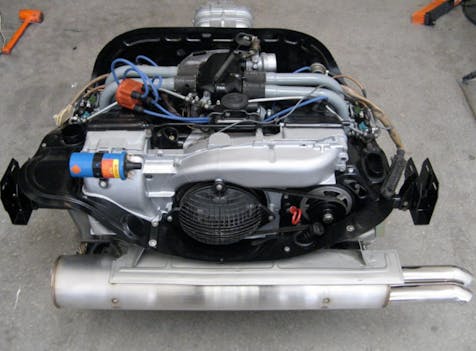
Hagerty Community user lasersailor came in strong with this one:
“I’ve got you all beat. 1679cc flat 4 in my parents 1972 VW411 wagon with a wimpy 3-speed auto transmission. Two fires caused by improper fuel injection repair at the so-called dealer in Florida. The 2nd fire caused near total immolation. Plus it was slower than a Pinto or Vega.”
Toyota 3VZ-E V-6

Hagerty Community member John Nichols gave a very balanced perspective on one of the more desirable and durable engines from Toyota, because sometimes tearing into something can turn into quite a shock:
“I recently got involved with a 1992 Toyota V-6 rebuild. The truck had a blown head gasket, the oil was full of water. Obviously these vehicles have a huge cult following of being amazingly reliable which I’m sure is well deserved.
HOWEVER when things do start to go it will cost you and assembly must be performed like a surgical operation. Parts and pieces and shrouds, crossover exhaust converters not to mention miles of vacuum lines weird little filters and of course the timing belt alignment are all part of the problem, not to mention the famous under the manifold sensor wire.
Ordinarily working on engines can be kind of fun be it a small block or an English roadster, although you have to make little tweaks often and pay attention to detail the reward of a few hours attention is measurable performance improvement.”
Chrysler 2.2-liter four-cylinder

This one might spark some controversy, as Chrysler’s 2.2-liter engine was designed specifically for a new platform and a new automotive reality. That said, Hagerty Community member David likely had an older model, but his experiences are certainly worth a read:
“As I recall memories of the early 80’s K Car with that darn 2.2 liter I feel a tension headache coming on. That engine had more use as a boat anchor, and I remember my poor dad spent more time and dollars repairing shoddy engineering design.
Crazy but true, when I got my licence and started to drive – I took that K Car to town and the engine actually fell out of the car! The front motor mount failed in the middle of an intersection. I guess even the car itself was sick of that engine and tried to spit it out.”
I reckon that A. Raymond had it even worse, but at least the dealership asked him a rather hilarious question:
“I had a Chrysler 2.2 non turbo forced upon me as a young fellow. Driving home from work in rush hour traffic, the engine decided it was time to digest itself. (It had 25,000 miles on it at the time.) The dealership accused me of ‘racing’. I laughed long and hard at the suggestion and told them I wouldn’t be doing too much racing with 88 hp.
After begrudgingly replacing the motor under warranty, I drove it another 3 months before selling it to another unfortunate schmuck. It was the worst thing I have ever had the displeasure of having to drive. I look back now and still laugh at that ‘you must have been racing’ suggestion.”
Oldsmobile Quad 4 four-cylinder

Brian was pretty sick of the Iron Duke in his 1985 Cutlass Calais, noting it was reliable but also “noisy and weak.” So imagine his delight when the Quad 4 made a splash in 1987:
“I was so excited to get one of the first Quad 4s. More power and much quieter. My love affair ended at 67,000 miles when it had a complete meltdown out of warranty. My very last GM car.”
And then we heard from Tom:
“Yes, I had the Quad 4 in a Pontiac Grand Am. Delightful, until the head gasket failed. Dealership near my work (different state from purchase point) tried really hard not to cover the failure but, after showing how much coolant I was adding, did a cheap fix. Probably tore it down to only replace the head gasket because it failed again, just out of warranty.
At that point, I was back where I bought the car, and they repaired it again, but it still didn’t seal. Any time I got in traffic, it would overheat and blow out the coolant. Tried checking the cooling system (radiator, etc.) without finding any issues. Aluminum head must have been significantly warped by that point. Finally sold that car. Too bad as it was fine as long as it was moving.”
Honda CVCC four-cylinder

Dan T Man takes us over to Honda, a brand we don’t usually hear about in this context. But he noted that the “1751 CC engine in the original Honda Accord was known to develop a head gasket leak between the #3 and #4 cylinders every 30,000 miles.” He said that it ran fine otherwise, and learned that “when the engine lost about 50 rpm at idle it was time for another change” of the head gasket.
AJD went further:
“My first brand-new car was a 1977 Honda Civic CVCC. Within 60K miles it had eaten 3 water pumps and blown its head gasket. The head gasket had been recalled but would not be replaced until blown. It really blew up nicely and the engine never ran right again.”
Buick 3.8-liter (Malaise Era) V-6

Don’t take this as a slam on Buick’s tried-and-true, 90-degree, 3.8-liter V-6. Odds are the problems that Dwayne Wertman experienced came from the Malaise Era engineering mounted to its induction and exhaust systems.
“I bought a new 1981 Oldsmobile Cutlass V-6. The engine would ping and rattle just trying to keep up with traffic. Often times it would stall in the intersection. I returned to the dealership on many occasions. It was a really good dealership, [because] after eight months they bought back and all I lost was tax and license.”
eagerdever drives home the point of this being an issue from the 1970s and early 1980s:
“I experienced oiling problems accompanied by valve train noise and the engine light in a 3.8 V-6 in a ’79 Olds Cutlass wagon. I’d stop and let the engine cool down, and then be on my way. The crankshaft finally broke in half. Because it broke on the diagonal, the engine continued to run, though poorly. A co-worker had similar problems with that engine in a Grand Prix, replaced under warranty. Another co-worker lost the engine in his Buick Skyhawk (the Buick version of the Chevy Monza). All three were due to poor oiling.”
Mitsubishi 4G54 four-cylinder with Mazda sprinkles
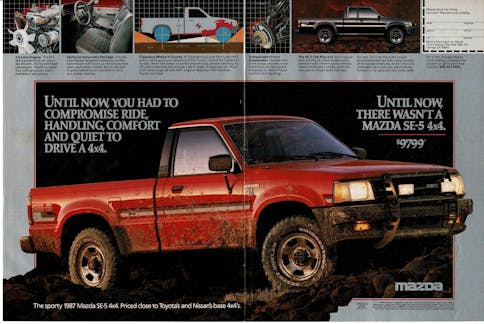
While the Buick was a victim of engineering mandates of the era, apparently Mazda shot themselves in the foot with a half-baked design made with no third-party intervention! Check out Arthur Hill’s fascinating tale of deceit:
“In 1988, as my family grew to 4, I needed to trade my Toyota 4X4 Pickup for one of the new ones with actual back seats to hold the two children. Unfortunately Toyota did not produce one until a few years later, but Mazda had a very nice looking B2600 4X4 that had back seats. This truck had the worst engine I ever had to deal with. I quickly discovered that if you really put your foot into it under a load, the engine would stutter and almost stall. Many trips to the dealer failed to solve this issue.
Finally a mechanic took me aside and admitted that Mazda rushed the truck into production without having an engine big enough, so they used a Mitsubishi 2.6 engine instead, but to make it easier to work on for their service people, they adapted their own accessories including the carburetor. Under load the only way the engine could get enough fuel was to link both barrels together all the time.
Needless to say, Mazda dropped this truck and you never see any on the road. Terrible truck with a terrible engine, but the actual Mitsubishi 2.6 engine was probably fine in their own vehicles.”
Mitsubishi 4G54/Chrysler HEMI 2.6-liter four-cylinder

No, not that Hemi. Or that one. We’re talking about the hemi-headed Mitsubishi 2.6-liter used on the Chrysler K-car and its derivatives. Chris Harshman said that the “worst engine I ever had was a 4-cylinder Mitsubishi engine in my 1982 Dodge 400. I used to joke with my friends that I could accelerate from 0-to-35 in 12 seconds.”
Subaru boxer flat-four/flat-six
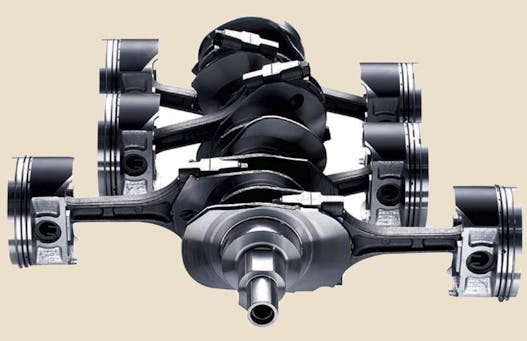
BobJ chimed in with one of the more offensive engines in modern history: the head gasket-munching Subaru boxer. But unlike other stories here, he made the same mistake twice.
“Had a 2005 and a 2010. Both blew head gaskets. Out of warranty but I complained and Subaru of America paid for half. Everyone complains about poor head gasket design & construction but I also wonder about open deck block design.”
GM 2.4-liter Ecotec four-cylinder
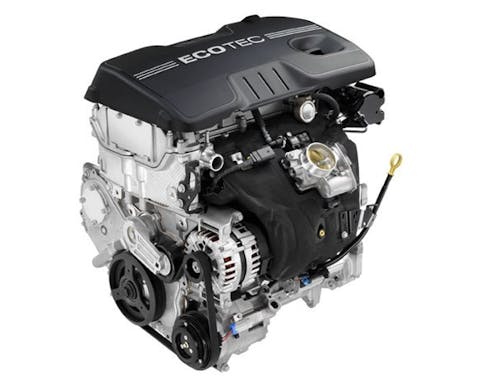
Hagerty Community member Rob keeps us in a more modern era, with a problem with the Ecotec 2.4-liter mill in his 2010 Chevrolet Equinox.
“Here’s a counterpoint for everyone who marvels at the reliability of modern cars. Launched just after GM’s bankruptcy, I should have known they probably cut corners on validation but couldn’t pass up a nice sized SUV that cracked 30 mpg.
It went through numerous high pressure fuel pumps. The timing chain tensioner went bad. The variable cam timing system went out and timing chain would slap like crazy when you started it. It had a bad heat treat on a pin in the cam shaft. Started burning over a quart of oil every 1000 miles and was rebuilt under warranty just before 50k Powertrain warranty expired. And I never got anywhere near 30 mpg on the highway.”
Ford 1.5-liter Ecoboost four-cylinder

Steve notes that his 2015-vintage, 1.5-liter, Ford EcoBoost engine is “absolute garbage compared to every other engine I’ve had the pleasure (or displeasure) of operating.” His example needed a new long block after 60,000 miles, and this helped him create a visionary notion about the EcoBoost’s promise of power and efficiency in a single engine:
“The reality is that you can’t have it all and ultimately lose out due to the extra complexity and stresses on the engine. I am not sure if the other EcoBoost variants are like this and I don’t care to find out personally.”
Holden Starfire four-cylinder

Mr. Nigel Utting takes us to the Land Down Under, reminding us that “GM Holden came up with an abominable 1.9 liter 4 cylinder named the Starfire.” The lack of power likely made Nigel’s comments far from the minority, with fuel economy numbers there were disappointing to boot:
“Based on a cut down six, this god-awful thing used to have a couple of seconds delay between hitting the accelerator and responding, a bit like downloading revs of the internet with a slow connection.”
Ford Cologne V-6

While Ford of Germany contributed greatly to the automotive landscape in Europe and the USA alike, Patrick Abbott reminds us that the Cologne V-6 wasn’t necessarily one of them. His example “regularly destroyed rocker arm assemblies and main bearings” while Richard Eaton was truly cursed with a lemon:
“I purchased a new, 1990 Ford Ranger with the 2.9-liter V6. Should have seen this coming when the transmission had to be replaced 4x for porous castings, and then both heads cracked under a recall. But then less than 50k miles after those heads they were again cracked sufficiently to turn the oil white in 1000 miles. Never again will I buy Fords.”
The Oldsmobile Diesel V-6

TerryTwoUtes picked up an example of an engine that history hasn’t looked too favorably upon: the Oldsmobile diesel.
“My parents had a ’78 Oldsmobile Delta 88 diesel, the dreaded 350 diesel engine derived from the gasser engine. After about 5–6 blown head gaskets and even one full short block replacement, it was finally traded off. Only good thing was GM trying to save face and all of those repairs were covered under extended warranty.”
Cadillac HT4100 V-8

Speaking of obvious punching bags, Hagerty Community member Coffeyclan reminds us all how low Cadillac went upon the introduction of this “High Technology” motor:
“The worst was Cadillac’s HT4100 engine. Acceleration was at a snail’s pace, the timing chain went bad twice, etc, etc, etc. I sold this car before the warranty ran out!”
Detroit Diesel “Fuel-Squeezer”

The one, the only, the legendary DUB6 threw us a curveball, thanks to his experience driving commercial trucks:
“In the mid-’70s, I drove longhaul truck for a fleet operator that leased their rigs. Most of the trucks had Cat engines and either 13 or 18 speed transmissions. As fuel prices rose during the embargo period, the leasing company offered up a Kenworth needle-nose with Detroit Diesel “Fuel-Squeezer” and 6 speed tranny to test out. Guess who was low enough on the pole to get picked to drive it for what was supposed to be 3 months?
That thing was so gutless – and the gear ratios so far apart – that even on the slightest grade, I was lucky to be able to manage 20 mph, loaded. Empty, it might get to 50 downhill, but then of course, there would be a corresponding upgrade. Fuel squeezing? Hardly. Most of the big Cats were averaging 4.5-5 mpg. This little longnose managed about 6.0 – mostly because the throttle had to be just about wide open all the time just to maintain forward momentum.
Maybe would have been fine for a flat-land operation, but in the mountainous WEST, it was pretty sad. My trips started taking up to twice as long as was projected, and several appointments would be missed every week. After about 8 weeks, the truck went back to Kenworth!”
Toyota 18R-C four-cylinder

Let’s be clear on one thing: This isn’t a slam on all Toyota 18R engines, only the California-spec motor aimed at reducing emissions. Pete notes that the 18R-C was never designed for durability:
“I am a car guy and former auto mechanic. By far the worst designed and engineered engine was a Toyota 18R-C. I have had experience with more than one, and they all burned valves every 15,000 miles even after Toyota did a factory upgrade to “fix” the problem (which it did not). I drove the car for 75,000 miles and did 5 valve jobs before I woke up and sold it for $500, it did have a good clock though.”
Chevrolet 2300 four-cylinder

Of course the 2300 motor would make the list, as there were three negative comments to this effect. It didn’t help that the early Vegas weren’t the most reliable dance partner, and NCB chimed in with a personalized tale of ownership:
“I owned a 1973 Vega GT. Yes, I’m dating myself. First, and worst car I ever owned. Engine overheated due to poor cooling system design which led to scored cylinder walls in the aluminum block. It drank oil! Bad valve stem seals and “rusting away to nothing in 5 years” were icing on the cake. MotorTrend Car of The Year in 1971!”

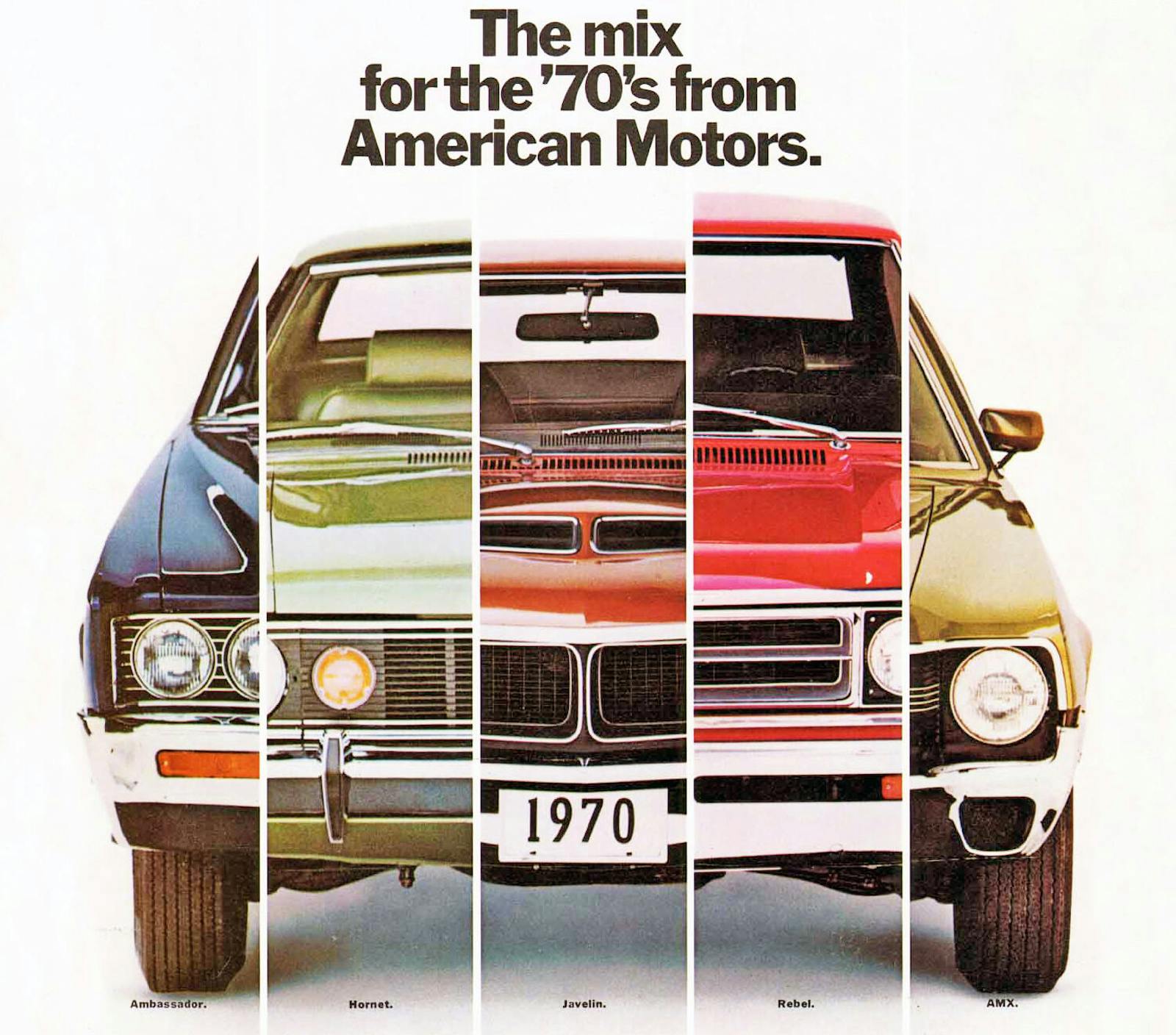
My first car was a 78 Regal 3.8. Put a gauge on it and read 8psi. Think there was a problem? I’ve worked at Gmc dealers for 34 years and the ecotec is a cash cow for us for timing chain failures and oil consumption. You also have to understand 90% of the population abuses their vehicles!!!
Ford 1.0 liter 3 cylinder EcoBoost. To discover how bad these engines really are and how often this problem occurs go to any European vehicle forum, they’re fortunately a lot more common over there than here. The engine is efficient enough and compared to the standard 4 cylinder offerings it actually sounds good, my theory is that it’s the 3 cylinder design. But one aspect of the design makes for an engine that’s anything but a good design or even a good idea. Like many newer vehicles the thing doesn’t have a timing chain it has a belt, not necessarily problematic by itself because manufacturers have been using timing belts for decades. Some genius decided that putting the belt inside the engine and bathing it engine oil was a key to ensuring that the belt would have a long and trouble free life. At best, you’ll get 120k out of the engine before you need to replace the belt, a big job that requires specialized tools. At worst, the belt will start falling apart at 80k miles-in my case-clog up the oil pickup in the sump with bits of plastic, starve the engine of oil and destroy it. And I can still read articles in major car magazines extolling the virtues of this particular engine. Had a chance to mention it to my neighbor, a Ford engineer, apparently it’s common knowledge in the company. If you’ve read this and own a 1.0 EcoBoost consider yourself warned.
I liked the motors in my 1965 Honda S-600. They seemed to have all the features that would make for a great engine. I write ‘motors’ as a plural because I had a few of them—all in the same car. I had bought this bright red sportscar because it looked irresistible in a store window on Yonge Street in Toronto. And also, Canadian Track & Traffic reviewed it as a rugged and long-lasting car. Well in the three-or-four years I had it, I had to change the engine 4 times and the fellow I sold it to had to buy a fifth. Once, on a motor tear-down repair, one piston was noted as missing—clearly having evaporated and exhaled out the tailpipes. The handbook recommended 8,500 RPM shifts, and the redline was 12,000, so maybe that enthused the motor-tailpipe connection. All four engines of mine were promptly & politely replaced by white-gloved engineers from Japan, but all-the same, I had a few middle-of-the-night stalls on various highways and having no “mobile ” phone, I had to walk to payphones to ask my dad to come out and help me deal with it. Other than that sort of thing, I liked the engine(s). Once I drove the car to a Formula One race at Mosport, and the sounds it made while I maneuvered to park were almost identical to Jimmy Clark’s and the others on the track—a point of pride at the time. Everything about the car was jewel-like, including its ruggedness (lack-of). These cars were rare, and as-it-turned-out, experimental. I think I read somewhere that they were sold only in Japan, Switzerland, and Canada–a tryout for the big-time. A planned day-trip north to Haliburton County, Ontario, in February turned out to be an enforced overnighter at our uninsulated family cottage. I remember that the heater in the car was also an unresolved experiment. Still, I don’t resent buying this car, I replaced it (or supplemented it) with a new Morgan 4/4 1600-C, which felt downright truck-like in comparison. But I still have the Morgan, looking as good as ever. And some pictures of the Honda.
Almost any BMW V8 – valve seals, coolant pipes.
I had the Olds/Caddy diesel in my 1979 Cadillac Seville. I love the look, comfort and highway cruising with a n 8 track and built in CB radio. It was great gas mileage and power on the highway until it wasn’t. Left me stranded 100 miles from home. AAA towed me and I fixed it by replacing it with a GM 350 gas motor out of a rear ended wreck. I left the 2 batteries just for fun.
I should buy a lottery ticket. I had three of these engines – the Dodge 2.2 (85 Charger – 80K miles), the Cologne 2.9 (88 Bronco II – 175K miles), and a Subaru 2.2 Boxer (92 Legacy – 350K miles). I put a combined 600K miles on them, and I never had a problem with any of them aside from the Subaru. At 300,000 miles, it tossed the harmonic balancer, which hit the road and then ricocheted and punctured the oil pan. I drifted off the side of the road while all the gauges went nuts. I didn’t realize the oil pressure was zero until I was stopped for about 10 seconds. I shut the car off, had it towed to a shop, a new oil pan installed, and I put another 50K miles on the car without any complaints.
This isn’t to say that they were not gutless, buzzy, underpowered boat anchors, but at least in the case of these three engines, they performed well.
On the other hand, I had a new 88 Mustang GT that had a completely unreliable engine with some electrical glitches that left me stranded and frustrated (and Ford unable to fix it under warranty). Eventually that forced me to trade it in after two years with only about 35,000 miles on it – for the Bronco II, which gave me a decade of faithful service.
GM 3100 V6 in my ‘98 Olds Cutlass. Known issue with the cheap head-gasket installed. The last GM I ever purchased.
Had a Vega 2300 that went 250,000 miles. It burnt oil until I had iron sleeves put in the block,
never a problem after that.
I’m surprised no one mentioned the 70s era Ford 2.3L ohc “Lima” four cylinder engine. I had one in a Mustang I bought new. Something about lack of oiling due to cost cutting in the manufacturing led to early piston wear. Dealer rebuilt the motor early on under warranty, but not without a fight. Ran well until the piston slap returned after several years. Traded in my first new car with disappointment.
What about the 82-84 Chevrolet Crossfire V8’s in the Camaro, Corvette, and Trans Am’s? I’d like to hear mechanics comments on that engine. I remember 5 foot long spark plug wires that routed through the motor mounts and behind the starter. Not to mention the impossible to find forever vacuum leaks.
Don’t forget about Hyundai 1.8 lit NU engine. Junk!
How about the Hyundai 2.0 Turbo in 2017 Sante Fe Sports.
How about the Dodge Ram Hemi with the infamous tick or broken exhaust bolts and everything thing else that failed? My 2009 had the engine replaced at 200,000km because it was less expensive than fixing the original motor.
Allow me to add (if someone else didn’t already) the Mopar 2.7 (I think) 6 cyl. from the early 2000s. Why, you may ask? It was also known as the Sludge motor. That should tell you all you need to know. I still have dreams for the oil light coming on in traffic.
The VW 412 flat four is a good engine. Sounds like from the comments that the person is blaming the engine and not the “so called dealer” who repaired it for doing a bad job. Had the repair person known what they were doignthe first fire never would have happened.